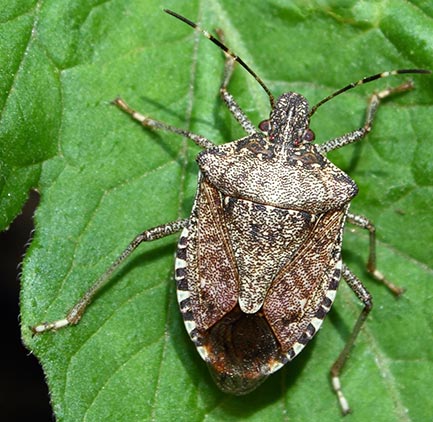 Stink bugs (Pentatomidae) are a major pest in cotton, rice and soybean.
Stink bugs (Pentatomidae) are a major pest in cotton, rice and soybean.
The most common is the green stink bug with the taxonomic name of Acrosternum hilare. Like all types of stink bugs, it gives off an offensive odor when handled. While most bugs can squirt foul-smelling liquid from holes in their sides where internal sacks produce and store the defensive liquid, the stink bug is one of the largest at ½–1 inch in length — and therefore has larger glands and a larger quantity of liquid to release.
Adults overwinter under leaf litter. These insects are particularly tough to kill. Summer adults survive for 1½ months. Overwintering adults can live for eight months. In the spring, adults emerge from their winter quarters and mate. A female can deposit 600 eggs in a month, which, depending upon the temperature, can hatch in less than two weeks.
Stink bugs have a large variety of host plants: There are probably 400 or more plants upon which they can feed.
They have a special fondness for cotton and soybeans, and can kill whole pods or an entire boll from feeding. Stink bug piercing-sucking mouthparts are large. The holes they leave behind are subject to rot and their toxic saliva dissolves plant tissue, which they suck up for nourishment. They tend to feed on developing seeds and fruit, causing massive damage to fruit by virtue of their size. Stink bug feeding results in both quality and quantity reduction.
Brown stink bugs (Euschistus servus) — which are brown, as their name suggests — are more common in the south. Since its growing season is longer, this insect is more resistant to insecticide applications. The damage inflicted is like that of the other stink bugs. Red-banded and red-shouldered stink bugs are more occasional pests.
Stink bugs can be difficult to see in fields. If dark feeding spots are found on the outside of bolls, intensify the search for stink bugs. Other occasional pests in cotton include cutworms, spider mites, tobacco budworm, fall and beet armyworms, loopers and whiteflies.
